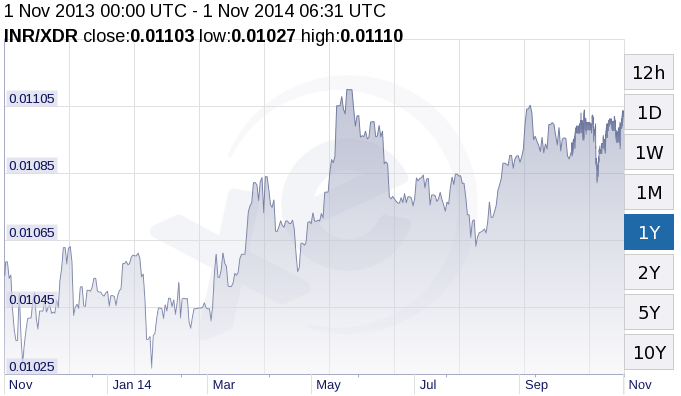Now this man, Alan Greenspan is a former US Fed chairman and if anything, he certainly would know about money more than a lot of other people. And this is what he said few days back in a meeting in Council on Foreign Relations with Gillian Tett of Financial Times.
Fiat currencies like Rupee have no intrinsic value. They are trusted by people because of the monopolistic power on violence by government. When govt. ceases to exist, the only thing you can use or store your wealth is in gold and silver.
If you think govt. ceasing to exist is almost impossible, just look at Syria, Iraq, Ukraine, Somalia etc. now.
Not only that, gold and silver saves you not only when govt does not exist, but it also saves you when govt does exist and has gone mad. Look at Zimbabwe or Argentina.
Here is the link to the CFR trascript.
"Look, remember what we're looking at. Gold is a currency. It is still by all evidences the premier currency where no fiat currency, including the dollar, can match it. And so that the issue is, if you're looking at a question of turmoil, you will find, as we always have in the past, it moves into the gold price.I can't agree with him more. Gold is not an investment. It is money itself. So don't compare gold to stocks, real estate or bonds. But compare it to other currencies like Dollar, Euro, Yuan or Rupee.
Intrinsic currencies like gold and silver, for example, are acceptable without a third party guarantee. "
Fiat currencies like Rupee have no intrinsic value. They are trusted by people because of the monopolistic power on violence by government. When govt. ceases to exist, the only thing you can use or store your wealth is in gold and silver.
If you think govt. ceasing to exist is almost impossible, just look at Syria, Iraq, Ukraine, Somalia etc. now.
Not only that, gold and silver saves you not only when govt does not exist, but it also saves you when govt does exist and has gone mad. Look at Zimbabwe or Argentina.
Here is the link to the CFR trascript.











